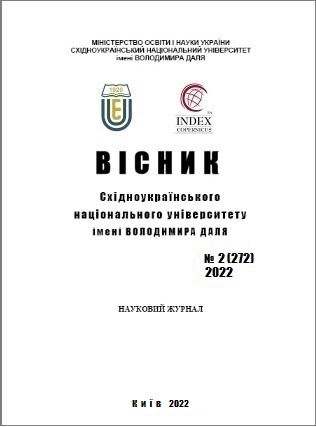Use of a mathematical model for optimization of dynamic parameters of ammonia production processes
DOI:
https://doi.org/10.33216/1998-7927-2022-272-2-120-125Keywords:
mathematical model, model adaptation, reactor, automated control system, optimizationAbstract
The work deals with the development of a mathematical model that can be used both for the optimization of the technological process and for the automated regulation system. The advantages of this approach are as follows: it is based on objective data that forms the control object itself; the implementation of such an approach is quite simple; obtaining an adequate and accurate mathematical model.
The study is conducted to optimize the technological process and the automated control system under consideration.
Adaptation of the model will ensure the effectiveness of both management strategies. To achieve the optimal dynamic model, the following tasks were solved:
- an informational and logical scheme of relationships between the parameters of the technological process under consideration was developed;
- mathematical models of the gas reactor based on the concentration of the target component and temperature were compiled.
The obtained dynamic model allows to adequately describe the nature of the change of parameters in a range that significantly exceeds the regulatory limits. This is especially important when it is used in reactor safety control systems and technological simulators.
As a result of research, it was established that taking into account the chemical reaction process in the model allows controlling such a complex parameter as the change in catalyst activity. This is a characteristic of the catalyst's ability to accelerate a chemical reaction. Catalytic activity is defined as the difference between the rates of the same reaction under the given conditions in the presence of a catalyst and without it, or as the ratio of these rates. Catalytic activity depends on the nature and number of active centers involved in the catalytic process. In the ideal case, when all active centers of the catalyst participate in catalysis, the catalytic activity is the maximum number of molecules that reacted on one active center per unit of time. This indicator is very important when determining the necessity of adapting the model. The adaptation of the model simultaneously ensures its adequacy both in the optimization system and in the automated regulation system. Which is a significant advantage, because it allows you to use one mathematical model in several cases, which, in turn, is more expedient from an economic point of view.
References
1. Амелин А.Г. Общая химическая технология [Текст] / А.Г.Амелин, А.М.Кутепов – М.: Химия, 1977. – 324 с.
2. Стенцель Й.І. Автоматизація технологічних процесів хімічних виробництв: Підручник [Текст] / Й.І. Стен-цель, О.В. Поркуян - Луганськ: вид-во Східноукр. нац. ун-ту ім. В. Даля, 2010. – 300 с.
3. Математичне моделювання технологічних об’єктів [Текст] : Підручник / О.Б.Целіщев, П.Й.Єлісєєв, М.Г.Лорія, І.І.Захаров – Луганськ. Вид–во Східноукр. нац. унів. ім. В. Даля, 2011. – 421 с.
4. Принципы математического моделирования химико-технологических систем [Текст] / В.В.Кафаров, В.Л.Перов, В.П.Мешалкин и др.– М.: Химия, 1974. - 344 с.
5. Spatial Self-Organization in One Process of Chemical Technology [Text] : International Conference on Differential Equations and Dynamical Systems., 1-4 August 1997. Canada. Watérloo : 1997. - P. 166.
6. Thermal Spots in an Industrial Packed Bed Catalytic Reactor [Text] : Year 2000 International Conference on Dynamical Systems and Differential Equations (ICDSDE) Abstracts Book. USA, Kennesaw, 2000. - P.81.
7. Абдалхамид, Д. Система экстремального управления многополочным реактором с моделью[Текст] / Д.Абдалхамид, М.Г.Лория, А. Б. Целищев, П.И.Елисеев // Вісник СНУ. - 2012. - №15(186). - ч.2. - С.152-156.

